LUNCH! from Philip Bloom extras on Vimeo.
Shot live during the 1 day workshop in London edited and graded in camera. Drone added and export done in Prremiere.
Also my entry for the weekend challenege! Enter here: http://philipbloom.net2013/06/13/discipline/
Shot on C300. Audio Rode NTG-3into camera
Sorry for the lack of posts again. Been a bit snowed under with shoots, workshops and edits! Again, I will try and post more frequently. I promise! 🙂 Quality not quantity though…right? Which brings us nicely into this post!
How many of you have shot on tape?
How many of you have edited that footage tape to tape, not with a computer?
Do any of you have any experience shooting on or still shoot on non file based media?
I expect most people will answer no. Some will say yes, anyone who has been filming for more than a few years will undoubtedly have shot on tape…although not necessarily editing using tape to tape. One of the best editors I have worked with has no experience editing on anything other than NLEs. Let’s not even get into the shooting/ editing of film! 🙂
If you have never had to shoot tape, shoot film, or edit without a computer then, to be honest, you have had it pretty easy!
Before you get defensive, let me explain! It’s not a dig at all. I of course have been very vocal in my embracing of these wonderful changes, there is no way I would like to go back to the bad old days where everything was way more difficult for my work (for my work is the key bit here, more of that later!)
Things have never been more easy or gear more available for filmmakers, and of course it is only going to get better and easier. Obviously it’s easier due to affordability and breakthroughs in technology. A professional editing suite costs £199.99 (Final Cut Pro X), 35mm sensor HD cameras that take 35mm optics are less than the cost of my V-Lock battery chargers! Back in my day (I sound like a whiny old man here, I never thought that would be, but I am becoming one!) everything was bloody expensive and out of the reach of most people. You either worked for a company with gear, rented, or took out massive loans to buy what you needed. Editing was a totally different kettle of fish to what we have now. Editing on a plane on a laptop would have been a science fiction dream for me 15 years ago…10 years ago it was possible, though with my Apple Mac Titanium G4 Powerbook & Final Cut. I can’t remember which version, but I had it. I learnt to do NLE with this computer and software, although I didn’t use Final Cut professionally until many years later. It was Avid Avid Avid back then. Avid was the big player back then and is still huge today in the pro circles.
I learnt to edit tape to tape, though, back in news. It must have been around when I was 28/29 (I am 42 now). I was put into the Sky News edit suites for 3 weeks to learn editing, as they wanted to send me off to foreign bureaus where the cameramen edit their own work.
The first week was supposed to be supervised editing, the second week was going to be unsupervised but simple stuff, and the last week I was going to be treated like the other editors. I had a knack for it though. Since I’m quite a tech geek, it all made sense to me and being a cameraman, I already knew how to edit…in my head. I had always constructed sequences in my head before shooting them. Everyone who shoots has to be an editor, whether they actually edit or not. It’s part of the basic skill set. If you don’t know how to cut shots together, it’s impossible to get coverage. This is not bragging, but on the 1st day I cut the top story for the 5pm flagship, and I got the rushes at 4.45pm! I didn’t really enjoy that, although there was a bit of a buzz from it. That’s not craft, that’s a challenge and challenges are good!
If you have never cut tape to tape, then you won’t have had that immediate experience of inserting the rushes into the machine and working straight from that instantly. No capturing, no converting. I edited native when I cut tape to tape 🙂 ALTHOUGH the first time I cut my own work I said “Who the f*** shot this?!”. Editing made me better. It made me shoot better. It taught me how long to hold shots. It taught me how many shots were actually needed for a sequence. Editing your own material is a great way to see your failings.
Editing this way, especially on analogue tape like Betacam SP, meant you had to be confident about your edits. Almost 100% confident. Your reporter had to be, too. You had two machines (three if you had a fancy suite for those futuristic dissolves) one was for the rushes and one for the edit master. What made things easier in the editing was a small amount of rushes. If I had a very short time to edit and I was given 60 minutes of rushes, my heart would sink. There was no way I could go through those rushes, and if you are cutting someone else’s work you wouldn’t know what any of it was. Even if it was your work, it’s a lot to spool through. Shooting economically was really important.
When laying down a shot onto the edit master, everything was sequential. The clock went down first, then we generally laid the first bit of V.O. down, then a grab from an interview, then more VO etc…leaving black to fill in after. If you wanted to use an UPSOT, that would be inserted like a grab. If you didn’t do it this way, you would be stuffed.
When we edit on an NLE, we move things around all the time. Throw stuff onto the timeline. Try things out, extend, shorten, delete, put back, slow down, speed up…changing stuff all the time. Why? Because the software lets us do this and doesn’t limit our creativity…but this way of editing makes you a lot less confident about your decisions than if you were editing tape to tape. If something you are trying in an NLE doesn’t work, it doesn’t really matter. Just tweak it, change it…it’s easy! “Apple Z” FTW!
With tape to tape (especially analogue) what you laid down was generally what went to air unless there was a massive f*** up. You couldn’t shunt things around or even makes things longer if they were earlier on the edit tape. The only way would be to redo everything you had down until that point, or you took another edit master and used the old edit master to take the bits you wanted and not the bits you didn’t. With analogue, this meant a drop in quality by a generation. Thankfully, with the advent of digital betacam, both SX and digibeta, you could do this without a generational loss. But it was a still a pain in the arse.
Editing was a lot quicker back then in my experience, others may and will disagree. I faff ALL THE TIME with NLEs. We all do…well most of us! You don’t make those hard and fast decisions because you don’t have to, and this is also a great thing….although editing using an NLE has cost us a lot of our discipline, our confidence. I would check the edit in the old days up to that point before moving on to the next shot…after that I don’t go back unless I had to, (as mentioned earlier) only at the very end to watch it back. If you have only ever edited with an NLE did you ever have that true discipline? Only you know!
This brings us back to the idea of tight rushes. Editors love tight rushes…just not too tight. It’s always better to overshoot than undershoot. Nobody wants to run out of shots, it’s preferable to have too much to play with than too little…but the sign of inexperience is overshooting. Lacking the confidence in knowing if you have got the coverage. I have overshot and still do at times. Although my overshooting is less to do with confidence and more to do with the style of most of my work, documentaries, where you always overshoot so you don’t miss a moment.
So, what is the ratio of raw footage to finished product? Well it depends on the project. There is no set ratio. If someone tells you there is, then they have not worked in different genres. For example, as I said, documentaries tend to have far too much rushes, especially evolving docs, as you don’t know where the story is going. Commercials tend to be nice and tight. Low budget fiction also, as you have never have enough time to do all the re-takes you want to! So when someone says their shoot to edit ratio is 7 to 1, that’s pretty amazing but also utterly dependent on the project.
This project below was relatively tightly shot-listed, so the rushes were 16 minutes (not including the 15 minute interview) and the piece 2 minutes long.This is actually a B&W version I did recently using Filmconvert. Below it is the original colour version.
I was given two days by Sony for the shoot for this piece. I said just one please. I would have liked the extra day’s money but I didn’t need it or the extra footage it would have unnecessarily given me. So with the tight rushes I was also cut it that night in about 45 minutes! The audio mix and music took a bit longer.
Portrait of a boxer 2013: FilmConvert B&W version from Philip Bloom on Vimeo.
So how do you gain the experience in knowing how much to shoot? Well, experience comes with time of course…
These are key things to do / remember when shooting to make sure your shooting is efficient…not too short and not too long!
Can you plan a shot list? Not all projects can, but if you can, it makes you more focused and if you are less experienced it will make you think before the shoot, which is better than wasting time/ making it up on the shoot.
Do you like the shot? If yes, then great…if not, then why hit record? Don’t record for the sake of it. Only roll on what you think is good.
If you edit, look at your ratio for the same genre. Is it generally the same? Do you feel you are getting too much? What are you throwing away and why? If you are repeating shots from different angles, ask yourself why and if you don’t need the different angles then don’t shoot them. You will only use a similar size framing of something from one angle normally…doing 3 or 4 similar ones is pointless as it wastes time both shooting and editing. Confidence is key!
Why are you recording too much? If it’s because it “doesn’t matter, cards are cheap” remember it’s YOUR time or the time of your editor that ends up costing…yes, cheap compared to film, but still far from free.
I shot this show for Discovery HD and the director had only ever shot film before. He was so excited to be using DVCPRO HD on the Varicam that he made me shoot WAY more than he needed and likewise made the interview longer than needed. Why? He said video was freeing…it was free compared to film. Yes and no. I warned him that we were massively overshooting, he didn’t mind. Two months later he phoned me to say he understood what I meant. We are always learning!
My first 5Dmk2 commercial that was for Greenpeace (you can see it below) was shot over 5 days for a 90 second spot. It’s by far the biggest shoot to edit ration I have done. The director didn’t know which direction it would go in as it was a “documentary commercial”. We had (and I still have it) enough footage for a half hour doc EASILY…just not the content or interview. So I have a huge amount of New Delhi footage that one day I would love to make into something but for a 9o second spot? WAYYY too much…simply because there was no real pre-planning, partly because we couldn’t.
Greenpeace: Voices of change. Shot on Canon 5dmkII from Philip Bloom on Vimeo.
Today my biggest flaw in overshooting is actually not with video but with stills! How many photos did you take on your last trip? 36? 360? 3600? Digital is easy, and we take hundreds more photos now than we did before. Film and processing cost money, digital doesn’t. It’s just a memory card. BUT it’s not much fun going into Lightroom with 1500 photos and sorting them out and working on them. The good thing with digital too of course is we don’t miss as many moments. Auto focus and rapid shooting means we capture things we want to! In fact, since I have started shooting lots of video on the 1DC in 4k, I am effectively getting 25 medium JPEGS a second, and each shot lasts around 15 seconds. That’s a lot of frames…at least that is full manual control so a bit trickier…I can lift frames so easily and they look great as you can see from a few frames just below. Getting a photo on a DSLR, a good photo on a DSLR, is pretty easy. It does most of the work for you. All you need to do is get your composition ok…framing can be tweaked in post…and rattle them off!
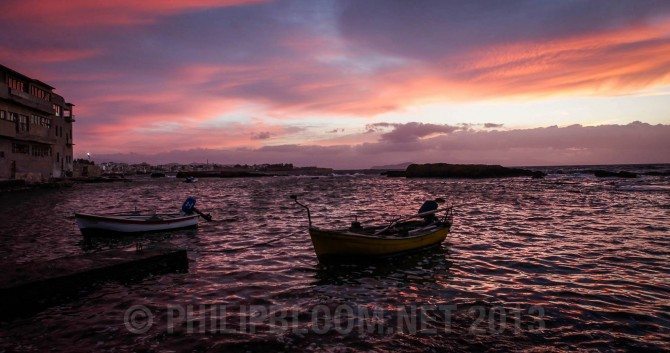
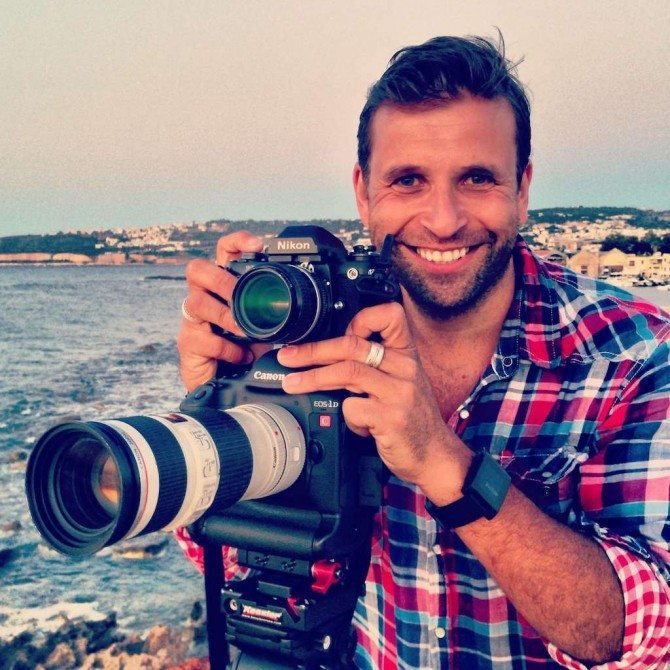
This is why I have started shooting film again…SLR film. I haven’t done this for 25 years. I stopped taking stills for a few years and picked it up again with the old APS system back in the mid 90’s…then came digital compacts. It wasn’t until I got a Nikon D300 that I started shooting 35mm stills again, but it was so different. It was easier!
I have picked up a few film cameras in the past few weeks. 3 Nikon SLRs…An F3, F4, FM3a and also a lovely but even harder to nail Leica M7. I generally go out with two of them with me (colour and b&w), and before I hit SNAP I consider the shot about 100 times more than I would do with a DSLR. So far I am absolutely loving the discipline it is giving me. Am I missing moments? Yes. Am I missing instant gratification? Yes..but that’s why I have my iPhone!
It’s worth giving it a try again. These old cameras are cheap. Experiment. It’s rewarding, and the discipline it’s given me back with stills is invaluable as well as the man-hours it will save me on future DSLR stills shooting.
Below are some frames and a Flickr set to see how I have been getting on! I still have a lot to learn but that’s the fun bit!
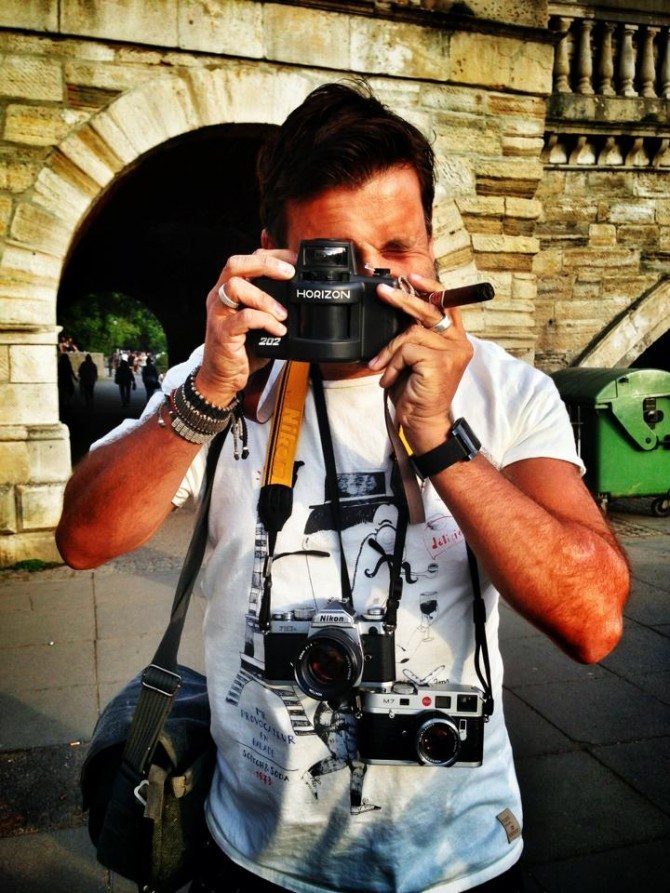
You can regain discipline. It’s possible! Even with video! Simply consider your shots and try to plan what you are shooting! In fact, that brings us onto the resurrected (again!) “Weekend Challenge”!
Your challenge, if you wish to accept it, is to make a 30-60 second short. The style and the subject is ENTIRELY up to you. The trick is this. YOU CANNOT EDIT IT! It’s all in camera. All sequential. No retakes. No erasing clips. No looking back to check. You will have to be 100% confident. 100% certain THIS is the shot you want and THIS is the duration you want. Yep. Horrible. A horrible idea. BUT it will make you think, think very hard in fact. Thinking hard about your shots is a great thing to do!
Now you may ask who on earth would shoot this way? Well an 86-year-old cameraman called Phil Pendry who I shot a mini doc on (still needs editing!) often shoots for edit in camera. It’s damn risky as his shots are very short, but they are for him, so he only has himself to blame if it doesn’t work. He is sort of an example but a truer more exact example is actually done with film.
The super 8mm film competition called “STRAGHT 8” is exactly that. You pay the entry fee, they send you a cartridge of Super 8mm, you put it in your camera. You shoot the film sequentially after much pre-planning (hopefully!), you then send the undeveloped film to them which then process. It’s only at the screening nights that you see your film. A crazy way to shoot. The 1:1 shooting ratio. Stupid and utterly impractical but a hell of a challenge and enormous fun.
A few years ago I wanted to a piece about Straight 8 for five news and my pitch was to shoot it in the same way. They said go for it! Yep. I shot a piece for them sequentially without looking back at previous shots and never erased a single shot or did a retake. DAMN HARD! Pre-planned, rehearsed and my heart didn’t stop racing the entire time. Shooting sequentially is a pain in the arse at the best of times. Doing it for broadcast is insane. Myself and Ruth Liptrot the reporter didn’t watch it until it went out. The programme editor refused to let it go out without checking it understandably. The fact that it went out said a lot. It came out pretty damn well, especially considering I didn’t make things easy on myself with dolly shots, crash zooms, interviews etc…. We even both went onto the programme after it went out for a live interview (below pic). You can see the piece we did below as well as a good example of what can be done. Do check out loads more on the Straight 8 website and on their VIMEO page.
Straight 8 from Philip Bloom extras on Vimeo.
misty’s second movie – a straight 8 film by benjamin scrimgeour from straight eight on Vimeo.
So back to this “1:1 challenge”. What is stopping you cheating? Nothing. Cheat if you want. You are only cheating yourself. This isn’t a competition…there are no prizes! It’s a challenge. There is no challenge in cheating and not following the rules. See what you can do! Amaze us…amaze yourself!
So join the Vimeo group and make your film. I am actually giving you longer than a weekend for this “Weekend Challenge” as it’s going to need much planning. You have until 8AM GMT on the 25th on June to upload to the group!
You can shoot on anything you want…just remember. Do it properly! It’s more fun that way…I will also do one to prove it can be done…quite possibly badly, but I will follow the rules! Also please do watch others’ work and give feedback!! 🙂
Most of all enjoy yourself….filmmaking is fun after all!

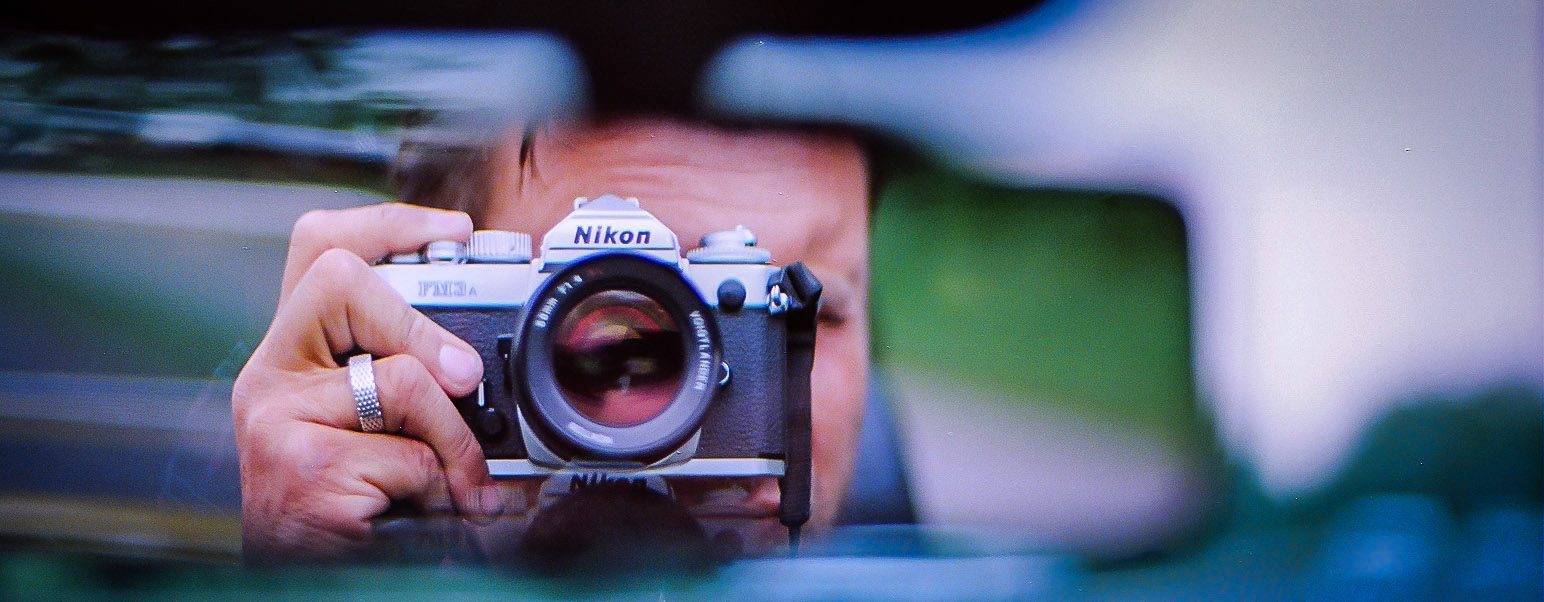



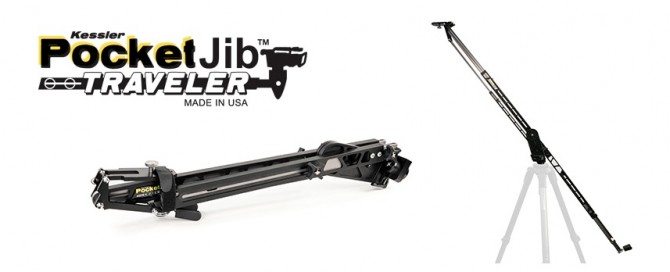
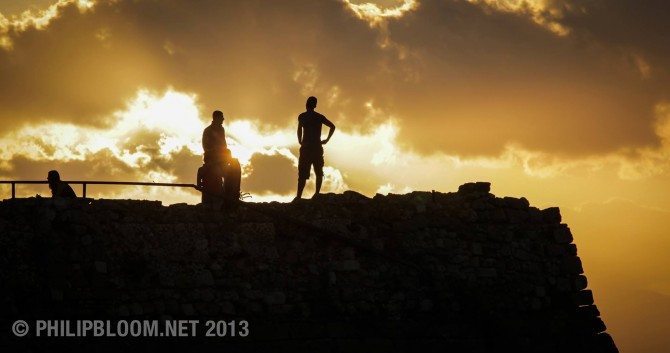
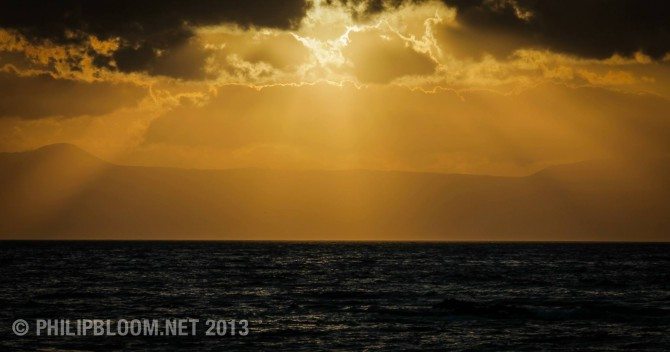
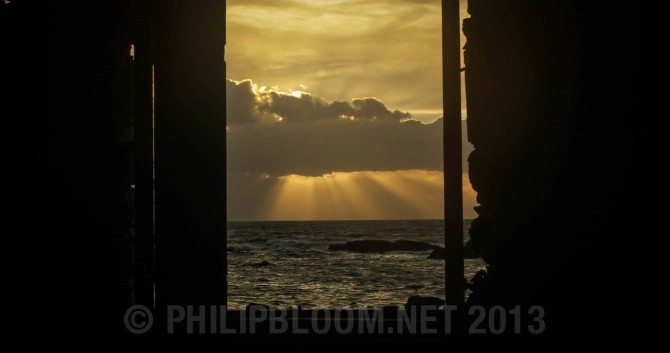
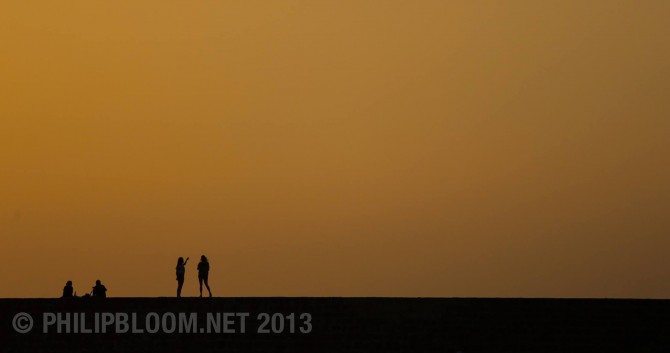

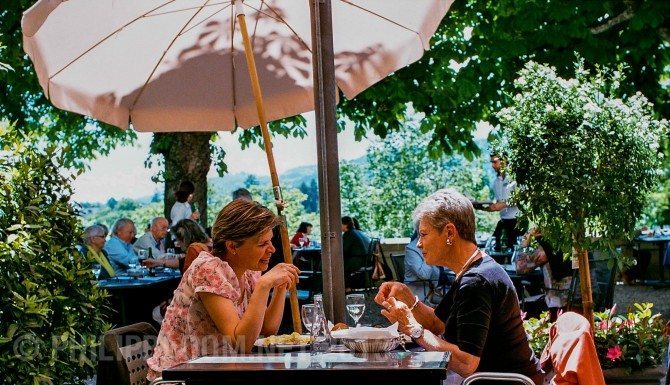
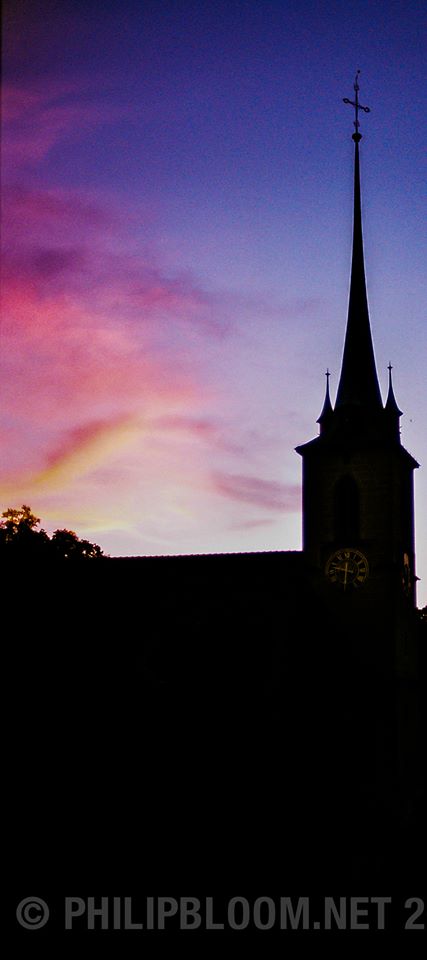
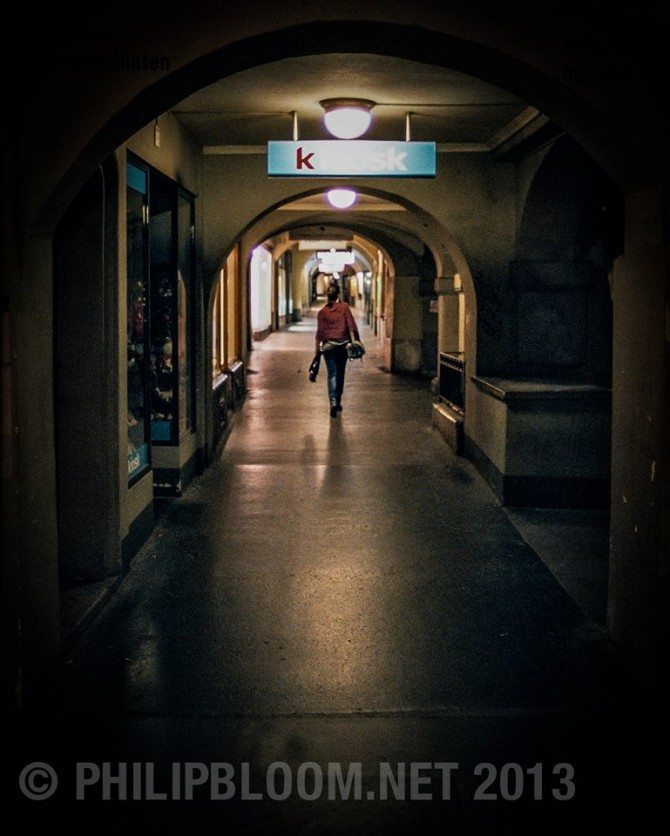
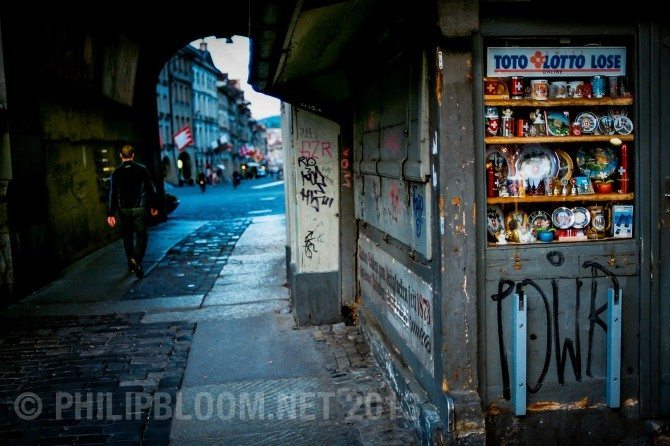
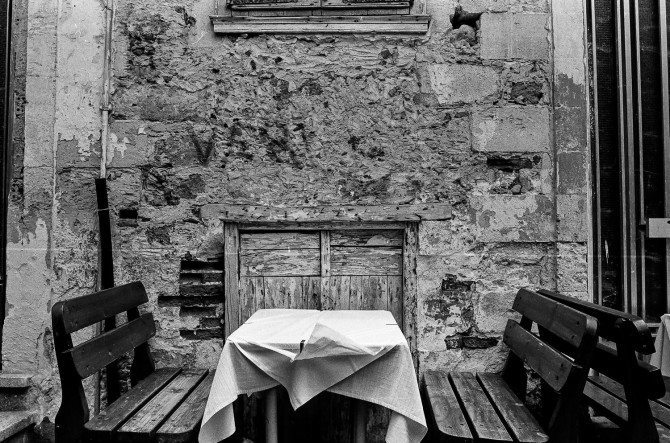
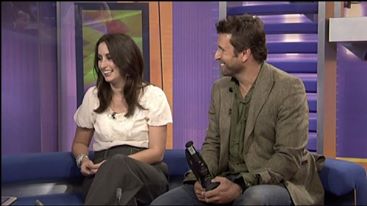

29 comments
Ironically, I received my negatives from a trip to Milano a few weeks back, where I shot with Illford Delta. A sexy b/w film. I walked around, took what i thought would be nice shots, always checking the light with my trusty Kenko lightmeter. Unfortunately, As I found out today, the film was set at 400 ASA. I thought it was 1600 ASA…. Needless to say, things looks… dark.
Oh well, this is why I like film. Ruthless, and will destroy your precious photos without telling you.
The Ilford Delta can be push developed, so it actually has 1600 ASA and more. Unfortunately it’s too late now. But here is the film processing sheet: http://www.ilfordphoto.com/Webfiles/20114271219521241.pdf
yes it can BUT not if you dont know which roll was underexposed. it wasnt marked at the time…all learning experiences
So true. About a decade b.d. (before digital) I talked to a very experienced photographer. He admitted to still shiver each time he went to collect films from the lab. When I had my first DSLR I felt like I was cheating when I looked at the tiny screen after taking a photo.
If you agree to lose an image or two, there is always a solution to develop a test with a small end of the roll, to apply the best development choice for the rest.
Thank you for sharing! I can only agree. I never editet film or tape. Back at school I shot on tape, all black and white. We could not edit at all so the videos had to be carefully planned. As far as I can remember we did each video in just one take.
I took my best photos ever on a 4″x5″ Linhof. Less than one photo a day. When making prints I found that reframing was out of the question. I had to use every mm of the negative. I am thinking of giving it another try.
Your article answers my question why I take so long editing stuff. I will overshoot less.
I picked up a Canon AE-1 Program last Christmas and have shot a few rolls of film with it. I’ve only had one roll developed (at Costco) and didn’t like how the colors turned out so I’m looking for a better lab. I think the chemicals at Costco might have been sitting around for a while. Shooting on film does slow you down and make you more deliberate on your composition and technique. I find myself double and triple checking everything before I press the shutter now. Great article and inspiration.
I learnt to edit on U-matic tape and develop and print stills in the darkroom. There was a real sense of magic seeing a black and white image slowly come to life in the developer. One thing that I dont miss is the smell. Old TV monitors and electronics sometimes could be smelly and definitely darkroom chemicals can be harmful to your health. I have really enjoyed going back to using film in my stills. I have a 4×5 inch view camera where you put a dark cloth over your head to view a dim upside down image on a ground glass screen. I love taking a long time when making portraits as I enjoy more contemplative sittings. You need to with a view camera and your subject tends to accept the time taken due to the obvious size and old fashioned bellows design of the camera. While computers are amazing I still do enjoy photographing without having to spend time on a computer and the magic of silver gelatine prints from a large format negative.
Thanks for sharing this, Philip.
This one brings old memories back when all I had was a crappy Video8 camera and … uh … that’s it!
We used to shoot, edit nothing and project from it for friends, on whatever TV was around. Lots of fun.
Then we discovered that the camera had some built-in “playlist” functionalities that let the user define time ranges to be recorded to an external master machine. What an upgrade: VHS master! 😉
Good thing is it was all about having fun and making it meaningful in the moment. Not 6 weeks later. Or never. NOW!
Great post. Bought back some memories of my brief stint as a news editor working with tape (can relate to that last minute buzz/stress – can’t say I loved it!). I am now a media teacher and run an in camera edit project with the students – it’s a great way to get them thinking about the framing/movement before hitting record. I also took part in a super 8 competition which sounds similar to straight 8 a few years back…..here’s the film – good fun!
https://vimeo.com/6719815
This year I learnt how to splice and project 35mm film, It was lots of fun 🙂
Timelapse: https://www.youtube.com/watch?v=dQukiED5zJo
I’ve been using this technique with Media Studies students for the past five years. Groups of four, one camera and one blank tape each. Off you go and film yourselves travelling from one side of the school site to the other, in as interesting a way as you can. No looking, no rewinding, come back in 40 minutes and show raw tape to class. Great fun, excellent training. Didn’t know it was some sort of established competition!
The first time I edited was in 8th grade (2003 I guess?) and it was on Adobe Premiere 6.0. It was for a morning show that the students produced for all the classroom tvs. I’d get back a camera with rushes of kids playing football and make a little piece about sports that would go out on the show. I also did my first interview with the shop teacher and we had some nice b-roll of model rockets going off.
I think discipline is so important. I really like the feeling of being able to cut something together quickly and stand by it with confidence.
I really enjoyed the short super8 film, it has a ton of charm. I’m going to try this challenge. It reminds me of when I first got a camera at 15 years old (30yrs old now) and shot/edited exactly this way because I didn’t know there was such a thing as editing! My first “production” was a documentary shot and edited in camera accompanied by an audio cassette tape with my narration and music. I had to press play at the same time to get everything synced up during the grand premiere. After that I learned it was easier to add music to picture by playing a boom box in the background and pressing pause/play for each shot. Thanks again Philip!
I’d just like to say how great it is to have a blog like this for us video nerds. The “Apple Z” FTW! line is priceless. Thanks to Philip for keeping us all motivated with his anecdotes and insights into the often discouraging world of video production. This blog keeps me going, and I have a feeling I’m not alone in that sentiment. Here’s to you, Phil! (And the drink is of course a Hendrick’s with Saint-Germain, muddled cucumber, and just a little bit of seltzer).
Cheers!
thanks jeff! I really appreciate it!
I really enjoyed the read. Back in the 1970’s I started in high school with 35mm. I bought a Nikon F after my first SLR wore after a couple of years. I also owned a Leica M4. At college I pushed the primitive Sony 1/2 inch B&W reel to reel equipment to the max. My internship was at a TV station that shot 16mm film for news, CP and Canon equipment.
At a TV station I modified stuff to work better for me and I used a consumer camera with a 3/4 inch video deck without telling the engineers. It passed broadcast. We edited the tape on these big professional decks. I put a 400mm Nikkor on my JVC KY-2000 so I could record President Reagan getting out of his helicopter at his ranch in Santa Barbara 6 months before the national networks did it. After working for the TV station, I moved to Los Angeles to freelance. In the Los Angeles area we never got permits to shoot. We like to be stealth and work without a large crew. I did Pete Ellis Dodge spot with me and the director. (One of them made it into a tv inthe movie “Into The Night.” Occasionally we rent sound stages for bigger shoots but still a small crew. I was one of the first to do a “making of” documentary on a feature film as a one man band with a JVC KY1900 and a 3/4 inch portable video deck. I have always looked at way to “do it better.” I worked with 35mm motion picture film as well and as an assistant editor on the movie.
After I moved to the Pacific Northwest, I was one of the first in the area to purchase a Sony Betacam camera because it was one of the first “camcorders” because I did not have to rely on a separate video recording deck. I had adopted the camcorder before the local TV stations had used them. Once I rented a Schwen Gyro-Zoom for my Betacam so I could shoot from a helicopter because it was one of the first lenses with optical image stabilization (O.I.S.). When Sony put O.I.S. in their TR-100 Hi8, I also used Hi8 professionally because the cameras were so small. OIS made a small camera hand holdable.
Then the Sony DCR-VX1000 MiniDV camcorder came out and I was in “Nirvana.” Immediately I bought one because it offered what I had always wanted. A very high quality camera in a small lightweight package. It offered 3 chip component video in an optical image stabilized camera that weighed 3 vs 30 pounds. It cost $4,000 vs $30,000. Like “Duh.” This made a lot of sense. The camera was immediately back ordered for 9 months so my camera had a lot of use because it was rented. I kept that camera for 10 years.
One of the other areas where I was an early adopter was non-linear editing. While owning my beloved VX1000, I built a non-linear video editing system for $15,000 (most systems then cost $60,000 and up) in 1995 long before most people had abandoned tape. I used a Macintosh 9500 with a Targa 2000 board and Adobe Premiere 6.0 and a $4,700 8 gig disk-array. I remember at the Media 100 booth at NAB where they said that “Premiere never stays in sync.” I never had a problem and where are they now? The next revolution was FireWire. It allowed lossless dubbing and transfer. My footage was transferred for edit for the first time without loss.
Back to 35mm film. In 1981 I bought the Nikon F3. Through out all this time I still had my film Nikon F3‘s even though a lot of others had moved on to autofocus cameras. I shot Kodachrome slides instead of prints and loved my beloved Kodachrome. I loved my Nikons and had used them for over 30 years. As you can see I used the “professional big boys of the business, Sony, Nikon” when it was the best for me. They might had not been the most cost efficient but did turn out to be frugal because of the way I used them.
I do find that when I am more choosy about what I am shooting even with digital that I get more keepers.
I have not shot film since. Do I miss film. Not really. Do I miss the Nikon F3? Yes, until I bought the Panasonic GH3. Will I shoot dil again, I don’t know. I do fat when I am more choosy about what I am shooting that I get more keepers.
Excellent writing as always. I still remember my first time editing video. I was about nine years old, and I’d inherited a broken video camera. After repairing it, I reasoned out how movies must get all of those scenes together and hooked it up to our VCR. So that was where it started for me- not even a proper tape to tape editing system, but it had all the basics. Now I edit more efficiently than most other people I know, and I shoot substantially less than anyone else I’ve worked with. I scared myself after my last reasonably large production, once I saw how close I cut all the shots… but it came out fine. The theory seems to work. Although I have to say, the idea that some people might not have shot on tape before really makes me feel old.
Great article, Philip. I learned to edit on a Panasonic VHS editor with no time code. Every edit was an assemble edit. In addition, on one project in particular I did a music video and had to manually line up sync… And for anyone who has ever had to do this, it is like trying to thread a needle while riding a roller coaster in the dark! I remember praying each time I hit the record button on the master machine, so as not to ruin previous edits. I’m soooo glad those days are over!!
I think ALL photographers should have to pay their dues shooting on film. I am fed up with these kids and soccer moms who buy a DSLR, put up a website calling themselves a “photographer” and start spraying and praying at every event, no thought to composition, no real framing, just click, click, click, all day long, ruining the majesty of the moment with their insensitive and ridiculous over-shooting. Then when it is all over, I see the “proofs” from these shoots and the shots are all blown out, out of focus, or both, with maybe one out of each 20 shots taken being worth anything at all. They call themselves photographers?? Please!! Most of these wannabe jerks who are ruining event after event with their insensitivity and lack of discipline wouldn’t know a darkroom if someone locked them inside of one. (Getting off my soapbox now).
First of all, I was glad to learn of a new tense of “learn” whereas I thought “learnt” was like asking “ax” instead of “ask.” To my surprise, I looked it up and it’s a real word. Leave it to the English to teach me an English word.
I’m so glad you’re bringing up film again. I’ve been shooting 8mm, 16mm and now 35mm for the last 9 years or so and love every minute of it. It’s never been less expensive to shoot film. Cameras that were once $150k are not selling for $3500 or less. Kodak’s modern film stocks are truly amazing. If you’re not shooting a pro project where absolute flawless quality is required, short ends and re-cans can be found for half the price of new film. Processing has been fairly constant in cost but HD transfers have gone down massively in cost.
Film that I shot 10 years ago and couldn’t afford to get transferred to video in HD I can now send for 2K scans at less than 25% what it would have cost back then.
I could write an article about modern uses of film but quickly I would say if you’re looking for a “home movie” feel, Super 8 or regular 8mm film is great. Perfect for inserts on many projects like weddings or sports shoots. 16mm & Super 16mm will give you HD quality with a REAL film look. 35mm is almost too good; for small runs it is the easiest way to achieve the best looking footage. For big projects I’d probably stick with digital.
Anyway, motion picture film is really worth another look by anyone making motion images. Cheaper than ever, better looking than ever, and based on recent deals with Kodak & studios, it will be around for many years.
Really interesting post Phillip. I might have to pull out my Olympus OM-1 SP and get some Ifford neg. I do have somewhat of a different point of view though:
I worked in 16mm for 25years and then I bought a Sony PD150 and haven’t really looked back much. It was like having a BetaSP rig that weighed less than 5 lbs and I loved it. I actually think DV looked better than Beta and even 16mm (color, not B&W) when projected. Obviously, I was never a fan of 16mm color negative. 35mm was a different story, but I could only finance it a couple of times.
The best thing about digital imaging is that it has freed me from spending so much effort managing dust and scratches and I don’t have to wait any more, biting my finger nails, for the lab to send my work print or transfer back. I don’t have to press DuArt hard to sit with the color timer any more since my lab is in my Mac and I am the “timer.” Now I’m working with file based media and I’m really, really glad to see tape go away. I always seemed to be able to crease Umatic tape better than anyone.
The only downside is a lack of an archival method and that is where film, in spite of its archaic nature, still can’t be out done. Of course 35mm MP negative will never loose it’s charm and profound beauty, but I hope people using digital will get over pursuing the “film look,” and move on to exploiting the gorgeous and unique beauty of digital imaging.
Ironically, the thing I miss most about film is sitting at a Steenbeck speeding through film reels and cutting with my ‘Rivas’ splicer. I do think my current students are missing out on the sense of exacting craft and discipline that 16mm imparted and that’s something I have to work on now that we have all but eliminated 16mm from our curriculum this past year.
-Russ
The magic question I have is what on earth do you use to scan your films, still and moving, to the digital realm?
This post is a deja vu for me. Done all that you write about. I started in 1965 as a film editor (with Dutch national broadcaster) and bought my first filmcamera (Eclair ACL) in 1976. Joined Avid as a productspecialist ( application editor) 1 of only 10 at the time in 1990 as employee number 45 until 2001. Picked up where I had left of in 2003 again as a freelance cameraman/editor. That counst up to 48 years in the trade. I still have my first 8mm film normal eight that is shot in the 1958 or so, not as a cameraman but as an actor to be able to kiss the most beautiful girl in school which I invited to play in the movie. She accepted.
Thanks for this post Philip, enjoyed it.
This post is a deja vu for me. Done all that you write about. I started in 1965 as a film editor (with Dutch national broadcaster) and bought my first filmcamera (Eclair ACL) in 1976. Joined Avid as a productspecialist (application editor) 1 of only 10 at the time in 1990 as employee number 45 until 2001. Picked up where I had left of in 2003 again as a freelance cameraman/editor. That counts up to 48 years in the trade. I still have my first 8mm film normal eight that is shot in the 1958 or so, not as a cameraman but as an actor to be able to kiss the most beautiful girl in school which I invited to play in the movie. She accepted.
Thanks for this post Philip, enjoyed it.
DISCIPLINE + DSLR + 2inches of GAFFER TAPE
I’m new here….and I have to say I love the entertaining and informative way you cover so many subjects.
I agree wholeheartedly with your sentiments on how the immediacy of digital technology has made us ‘lazy’ and ‘ill disciplined’ in our approach to picture taking. Being older (56)…..I appreciate the differences more than many youngsters who have probably never shot a role of film.
But don’t get me wrong. I’m by no ways anti digital….but I do miss that little bit of ‘magic’ of waiting to see what you get when processing a role of film.
But Hey….2 years ago I tried something mind numbingly simple with my DSLR.
There I was up in Edinburgh…and my shoot had been postponed by one day, so I had the freedom to go walkabout around the city and countryside on a clear sunny sunday with my camera.
But…before leaving my hotel I stuck a piece of 2″ square gaffer tape over the preview screen of my Canon 5D Mk2 with the aim of shooting all day and not glancing at the preview image every time I took a picture.
At the end of the day I returned to my hotel and downloaded the images through capture one to see what I’d got……..and it was an exciting moment waiting to see what I had. For the first time with digital I came close to that feeling you could get after processing a roll of film….and all thanks to a piece of gaffer!!!!!!
Try it sometime …….( but probably not on a job…ha ha)
Good idea. You don’t get that excitement of,getting film back though!
Hey
Great post and I love the challenge maybe I didn’t follow all the instructions because I did edit the sound but I learned a lot from i anyway. Here you can read about my reflections and learnings of the challenge if you have time 🙂
http://www.ativ.se/to-come-home-2/
Philip, you give me a lot of courage and vital inspiration with your blog and films, thanks a lot for that!
I really like your approach of stepping back a bit and give the shots more consideration before the shooting. It can save so much work in post production!
Keep up your inspiring posts!
Best regards from Germany,
Fabian
Philip, I’m so glad you wrote this. It may be one of the most important things you’ve written! I always tell kids who want to get into filmmaking to shoot film…start with 20 B/W minutes…dust off the old steenbeck in the basement of your university and cut it on that. Heard Caleb Deschanel speak a few years ago and he said “I am always surprised when I shoot film. Most of the times this is a good thing…”